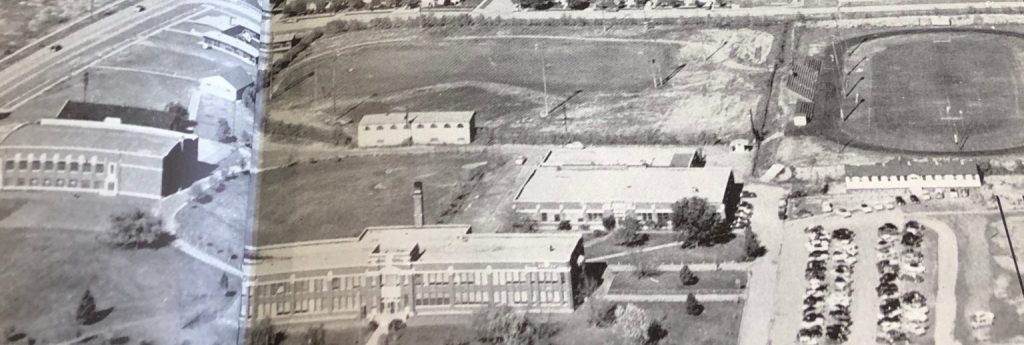Carbon College in the 1940s

Daryn Mason
Classes at Carbon College officially began on Oct. 3, 1938. More than 100 students enrolled at Carbon College and night classes began.
In January 1939, the Carbon High School junior and senior students transferred to the new Carbon College campus. College president Elden Sessions was in charge of the college campus and former high school principal Melvin Wilson was his assistant.
Wilson asked the school board to make him principal over the junior and senior grades. He was made principal over the high school once again. “During the remainder of Session’s ten- ure, the institution functioned as a two-headed organization,” according to “A History of Carbon County.” College instructors were paid more than high school teachers were paid.
Carbon College moved to establish sports, cultural and other programs. The Golden Eagles basketball team, debate club and drama classes were added. The school elected student body officers with John Holman named as its president.
The high school and college shared social events like dances, sports events, etc. Carbon College students could use the school bus for a fee, but they didn’t usually do that. There was enough demand that the college ran a bus all the way to Hiawatha, according to the book.
To help promote the college, Mayor J. Bracken Lee made a movie called “A day at Carbon College.” The Kiwanis club of Price took it to Grand, San Juan and Emery counties.
World War II broke out and the country was at war. The college sponsored a civilian pilot training program. During The Great Depression, one of the New Deal programs was the National Youth Administration (NYA). It provided jobs for youth.
Carbon College grew because of the enrollment of over 100 National Youth Administration students who helped build an addition to the vocational-education building. They stayed longer to add another section of the building. By 1943, the NYA students had left.
Many of the young men were in the military service and the young woman were working while World War II brought an end to the Depression.
By 1943, enrollment dropped to 27 students. Some college instructors volunteered to teach high school classes to have enough work.
In 1944, Melvin Wilson retired as principal and the Utah Board of Education asked Elden Sessions to be in charge of the high school and the college. He didn’t accept the assignment and resigned as president of Carbon College.
They then asked Aaron E. Jones to take on both positions and he accepted. Early in his administration, the teachers who taught high school classes and college classes were under a contract from the state and the district.
A decade later, Jones separated most of the classes into high school and college classes except for band and chorus. Five years after taking over the joint position, he requested that schools be separated. The high school was not able to build a campus. Jones also prepared the college for accreditation from Northwest Accreditation Association, which it received in 1948.
The end of WWII brought a huge jump in enrollment. A federal G.I. bill covered tuition and books and provided a monthly living allowance for veterans.




